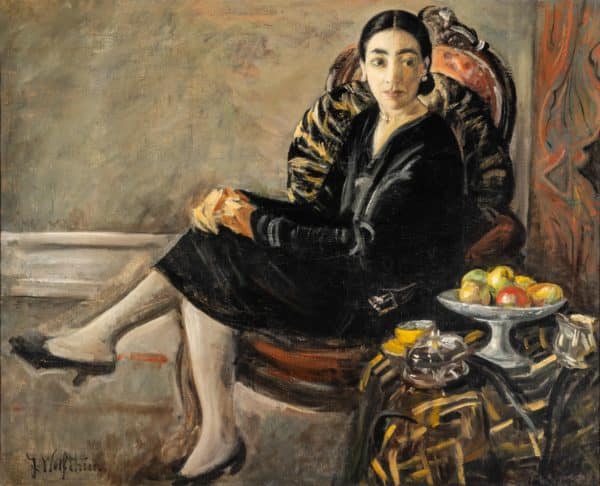

Julie Wolfthorn was born the fifth child of a Jewish family in Thorn on the Vistula River, which at the time was in Western Prussia. Her father, died shortly before she was born, and her mother Mathilde died when she was just six years old. She and her sisters were sent to live with their grandmother, who moved to Berlin with all of them in 1883. In 1890, Wolfthorn began training as a painter and graphic artist, presumably in the painting school of the Society of Women Artists of Berlin. In the early 1890s, Wolfthorn spent some time studying in Paris at the Academie Colarossi. After returning to Berlin, she enrolled at the painting and drawing school for ladies run by Curt Herrmann. In the years thereafter until 1904, Wolfthorn participated in the annual exhibitions in the Glaspalast in Munich. In the summer of 1897, she visited the artists’ colony in Worpswede, and in 1898 she joined the Society of Women Artists of Berlin. In May 1898, she was also one of the founding members of the Berlin Secession, though she later left because she felt disadvantaged in it. All the same, she took part in the Secession’s exhibitions until 1917.
It was at this time that she added the place of her birth to her name – thus “Wolfthorn” – in order to distinguish herself from the many other artists named Wolf. She joined the Association of German Artists in 1903, the same year it was founded in Weimar. The contemporary art business was still hesitant towards up-and-coming female artists, and at times even downright dismissive. For this reason, she co-founded the Exhibition Association of the Alliance of Women Visual Artists of Berlin – Munich in 1905 with Kathe Kollwitz, Sabine Lepsius and others. They exhibited their works several times in the gallery of Fritz Gurlitt in Berlin. In the early 1930s, Wolfthorn still took part in many exhibitions, but was excluded from the Imperial Chamber of Fine Arts and from the Berlin Secession under the Nazis. She was forbidden from exhibiting, and from 1939 onwards was also forbidden from exercising her profession. She was still allowed to work and exhibit with the Jewish Cultural Federation until this, too, was banned in 1941 and its employees arrested. In October 1942, Julie Wolfthorn was deported to Theresienstadt along with her sister Luise where she died in December 1944.
